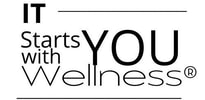1.1 (C) Difference Between Stress and Anxiety
Difference Between Stress and Anxiety:
I think the words anxiety and stress are used interchangeably a bit more than they should, because in reality, the two are truly different.
The definition of “stress” is: a condition or feeling experienced when a person perceives demands that exceed the personal and social resources the individual is able to mobilize.
Stress can be a condition or feeling of worry about a situation that may not be attainable. Or maybe where the demands are exceeding what a person is able to complete. Stress can be caused by something we are currently dealing with. An example may be a deadline that you can’t seem to meet at work, which may cause pressure inside your body.
But the greatest difference between stress and anxiety is that stress is limited to the task at hand. When the task is completed or situation is over, the stress is gone, or lifted, and the body can come back to a normal state.
Anxiety goes much deeper than stress, and has a prolonged affect (due to the fear), even after the situation is resolved. The fear will remain, causing our body to be on edge, and to not feel safe, as it fears a repeat of similar situation.
I think the words anxiety and stress are used interchangeably a bit more than they should, because in reality, the two are truly different.
The definition of “stress” is: a condition or feeling experienced when a person perceives demands that exceed the personal and social resources the individual is able to mobilize.
Stress can be a condition or feeling of worry about a situation that may not be attainable. Or maybe where the demands are exceeding what a person is able to complete. Stress can be caused by something we are currently dealing with. An example may be a deadline that you can’t seem to meet at work, which may cause pressure inside your body.
But the greatest difference between stress and anxiety is that stress is limited to the task at hand. When the task is completed or situation is over, the stress is gone, or lifted, and the body can come back to a normal state.
Anxiety goes much deeper than stress, and has a prolonged affect (due to the fear), even after the situation is resolved. The fear will remain, causing our body to be on edge, and to not feel safe, as it fears a repeat of similar situation.
